Winter Solstice
- Serene
- Dec 23, 2023
- 2 min read

The Winter Solstice is the oldest celebration in the world. In several lessons over two weeks, we explored the rich history and some of the traditions surrounding this time of year. From ancient traditions to modern-day festivities, we delved into the significance of the Winter Solstice by looking at Scandinavian folklore and Celtic influences that are still present today. The Winter Solstice, also known as Midwinter, holds great significance in various cultural traditions around the world. This astronomical event marks the shortest daylight and the longest night of the year. For ancient cultures, Winter Solstice symbolized the turning point before the harsh winter months, when food became scarce. It was a time of feasting and preparation for the challenges ahead. In Pagan times, this event represented the rebirth of sun gods and marked the beginning of a new year. The arrival of Winter Solstice brought hope as days gradually lengthened, signaling the return of warmth and light. Even today, cultures from all over the world come together to honor this natural phenomenon and embrace its significance in their own unique ways. Whether through candlelight ceremonies or traditional rituals, Winter Solstice continues to be a time of reflection, renewal, and connection with nature.
From our class, wishes for a Happy Holiday and see you in the New Year!
Our greeting card was created by Lumi grade 4
------------------------------------------------------------------------------------
This week, we talked about Celtic influence and
designs. Using the Celtic Alphabet, the class created
mixed media Illuminated illustrations with their name
letter and symbols of the season, using paint sticks,
brush pens and gold and silver pens.
Last week they created carved metal folk crafts inspired
by Scandinavian traditional images from nature.
j




















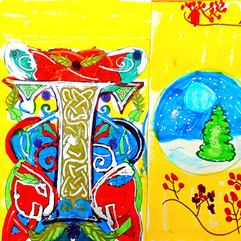



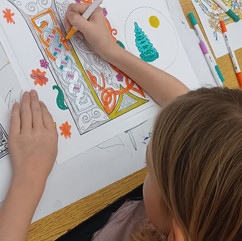





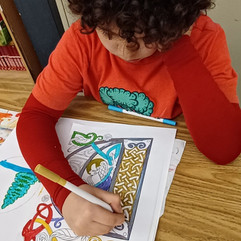





















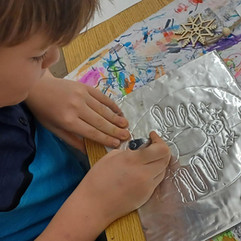

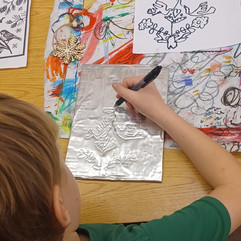


Comments